Image:
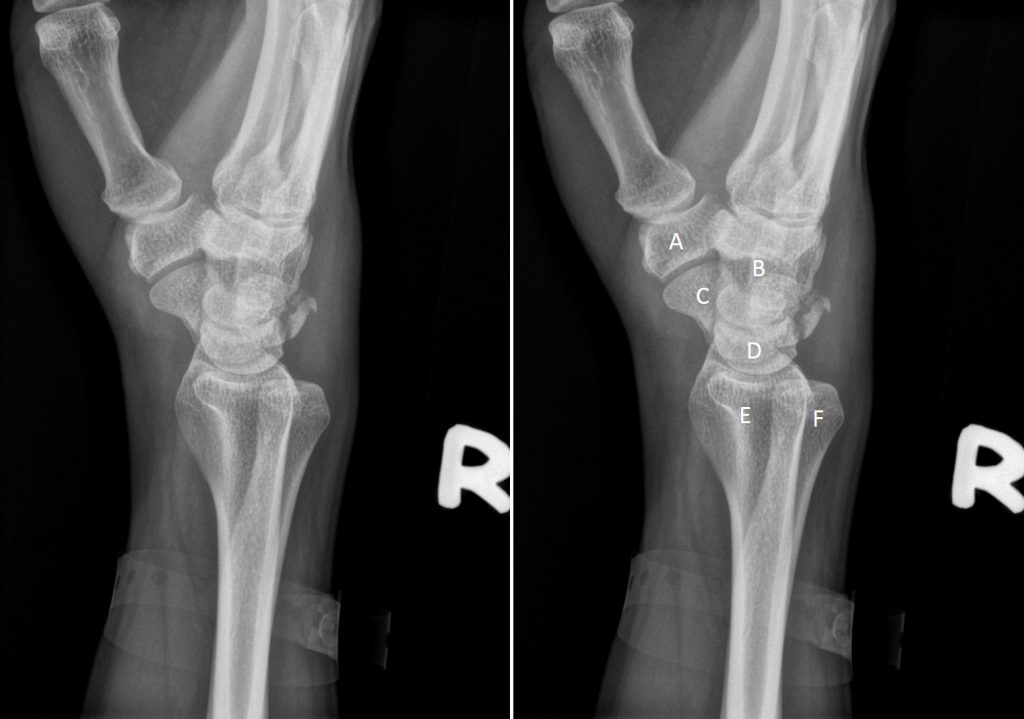
Question 1: Name the examination shown
Question 2: Briefly describe how it was performed.
Question 3: Name the labelled structures.
Question 4: Based on the images given, which bone is fractured?
Question 5: Briefly describe the lunate and perilunate dislocation.
Question 6: Briefly describe scapholunate and capitolunate angles.
Answer:
Question 1: Radiograph of right wrist in lateral projection
Question 2:
- Patient is seated alongside the table. The arm and wrist can rest on the table. Abduct the humerus so that it is parallel to the image receptor. Shoulder, elbow, and wrist should all be in transverse plane, perpendicular to the central beam. Wrist and elbow should be at shoulder height which makes radius and ulna parallel.
- Centring point at midcarpal, film size 18×24 cm, collimation proximal to include distal radius and ulna, distal to include midway of the metacarpals and skin to skin anteroposteriorly
Question 3
- A: Trapezium
- B: Capitate
- C: Scaphoid
- D: Lunate
- E: Radius
- F: Ulna
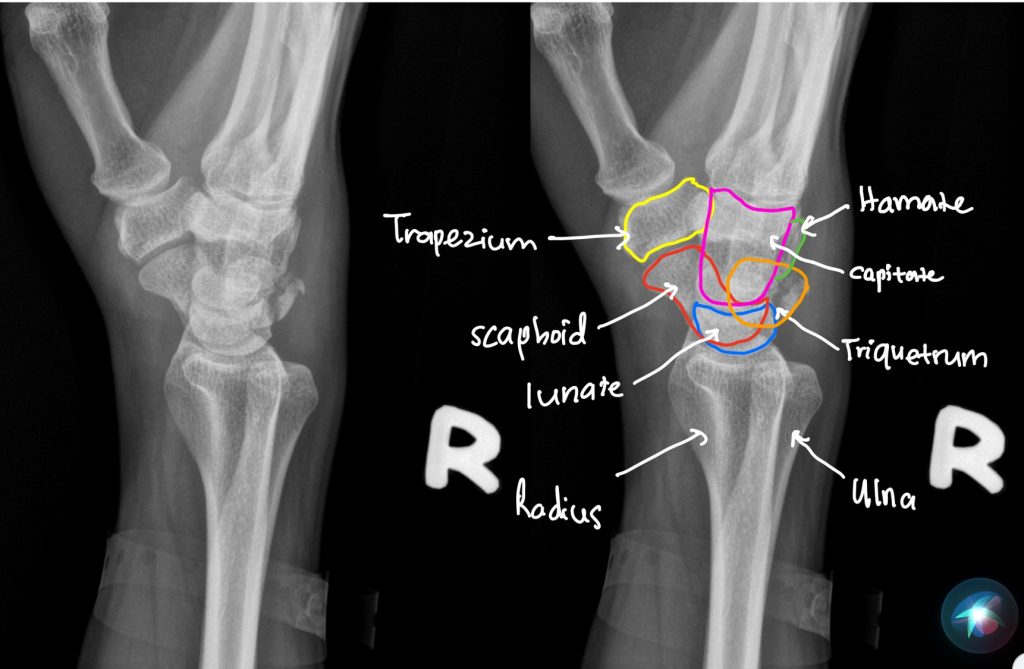
Question 4: Fracture of triquetrum
Question 5: The co-axial radius-lunate-capitate arrangement is disrupted in lunate and perilunate dislocation.
- In perilunate dislocation, the capitate articular surface is dislocated from the lunate, the lunate maintains its normal articulation with the radius.
- In midcarpal dislocation, the lunate tilts volarly but not dislocated from the radius. The capitate is dislocated form the lunate.
- In lunate dislocation, lunate lost articulation with both radius and capitate. Radius is volarly displaced. The capitate remains aligned with the radius but sinks proximally
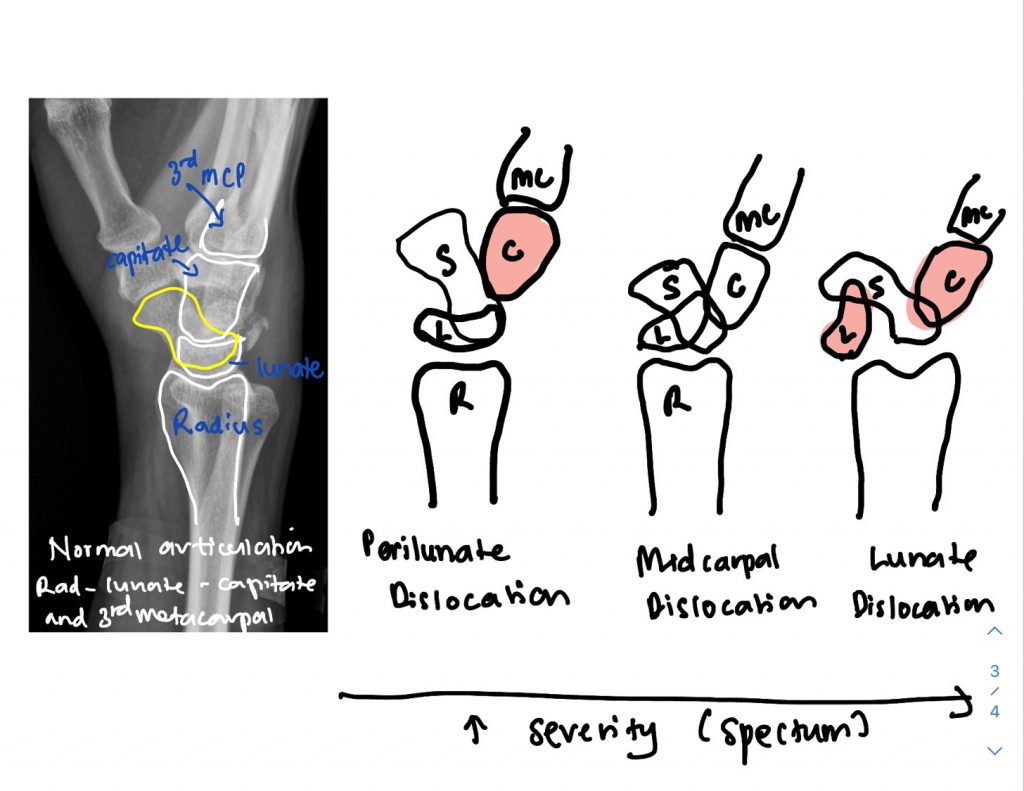
Question 6: Scapholunate and capitolunate angles are used to assess carpal instabilities. Normal measurement as illustrated below:
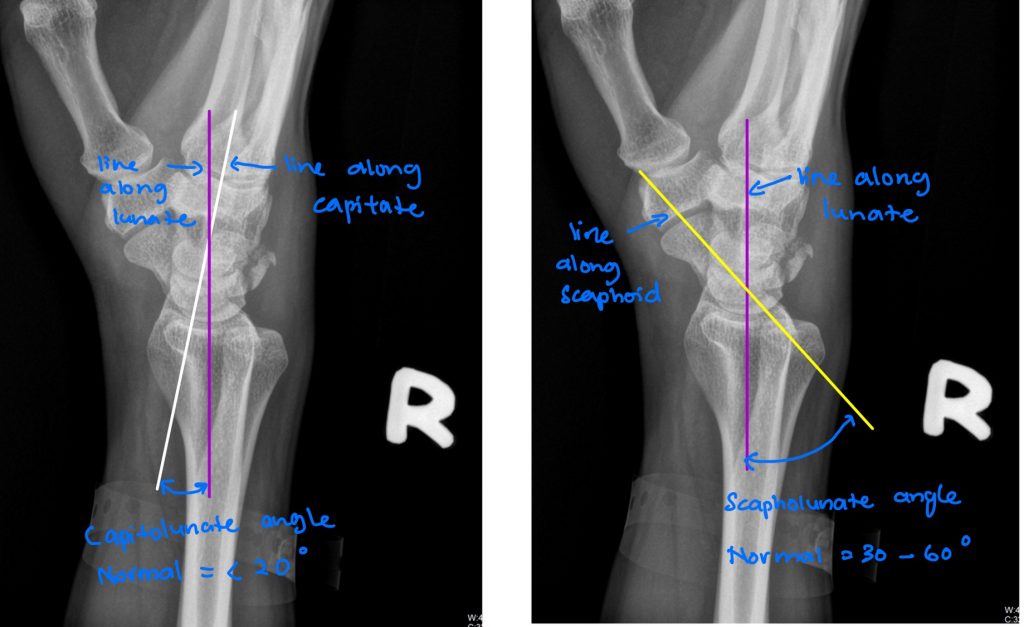
| Scapholunate angle | Capitolunate angle | ||
| Normal | 30-60 | <20 | |
| Scapholunate dissociation | increased | Normal | Scapholunate gap >2mm |
| DISI (dorsal intercalated segment instability) | increased | increased | Dorsiflexion of lunate |
| VISI (volar intercalated segment instability) | decreased | increased | Volar flexion of lunate |
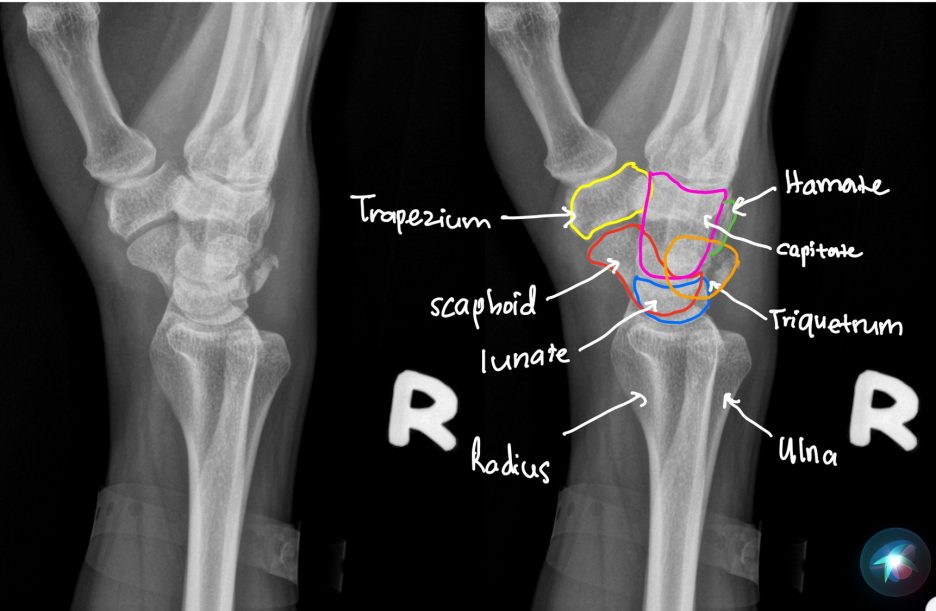
Recent Comments